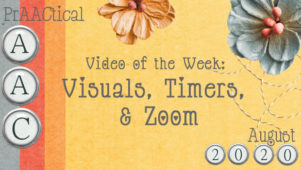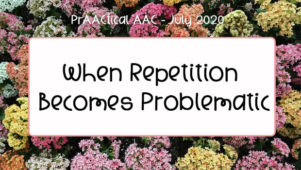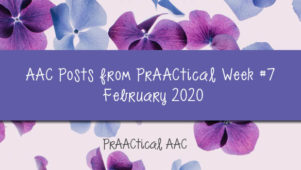Malls & Communication…. Supports

 I was in the mall with my teenage daughter yesterday (because that is her favorite place to go) and we saw a group of adults with developmental disabilities. Some of the group members were in wheelchairs and others walked. It appeared that they were on a ‘field trip’ or community outing.
I was in the mall with my teenage daughter yesterday (because that is her favorite place to go) and we saw a group of adults with developmental disabilities. Some of the group members were in wheelchairs and others walked. It appeared that they were on a ‘field trip’ or community outing.
My daughter has been ‘working’ with me since she participated as a ‘typical’ peer for various pragmatic groups while she was in preschool. She has been known to regularly (and not always so quietly) identify people who I must know since “they probably go to my clinic”. This would occur even if we were nowhere close to the geographical location of ‘my’ clinic. She has been known to find people who probably need my services so I can help them ‘talk better’. Although my daughter seems to be doing a lot of identifying without any formal training, I have to say that she is not making judgments, only wanting to help. She has programmed AAC devices, created communication boards (for the huge sum of $1.00 per hour), and given mini-lectures to her friends about what to expect when they go with us to help out at concerts, fun days, or walks. So when she ‘identifies’ or wants to tell me her thoughts on people, I know I will probably learn something. What I often learn is a new perspective.
Back to the mall….We walked by this group of maybe 15 young adults with developmental disabilities and their aides? Caregivers?, teachers?. The ‘caregivers’ were talking among themselves and a bit to the group. We did not see or hear any of the group members communicate. We did not see any communication supports, but there were no challenging behaviors. Everyone looked fairly happy.
And then my daughter looks over to me and says: “Do you think any of those guys has a communication device or pictures to communicate? It was actually a thought I had as we passed as well. I know this was a moment in time and we certainly did not have any real information. But it seemed like a teachable moment, so my daughter and I spent the next 30 minutes discussing communication supports. We thought about what we usually talked about before we got to the mall, what we talked about while we were at the mall, and what we probably would talk about after we got home from the mall. We brainstormed and thought about what would be easy, fun, and age appropriate for young adults to talk about. We came up with 5 communication supports we WISHED everyone with communication challenges would have and use for a mall trip.
- Personal Participation Story (modified social story)- provides information about what to expect during a trip to the mall. Even if going to the mall is a familiar event, the written/pictured story would be a great way to discuss the trip BEFORE it happens. The story can give a concrete way to talk about different aspects of shopping.
- Shopping List- can be used to help plan for the trip and then be used during the event to talk about items needed or desired. Lists can also be developed at the mall. Meaningful categories can be talked about. Lists can be anything from wish list items, things to look at, items to buy, funky things, hated things, favorite things, etc.
- Communication Wallet or Individual Communication Device- everyone has the basic right to have a functional communication and language system
- Store Choice Board/Planner- can be used to make decisions about which stores to visit or places in the mall to go.
- Rating Scales/Reviews – a visual way to decide which places were liked, which were NOT. Rating lists can go from simple (like or not) to complicated and any combination in between. Ratings can be assigned to stores, store clerks, food, crowd level, etc.
As we left , My daughter asked one more thing, “Can I give you a list of ALL the things I want from the mall”. I remembered once again, we ALL talk about what is meaningful to ourselves. Everyone should have that opportunity.
Filed under: PrAACtical Thinking
Tagged With: visual supports
This post was written by Robin Parker




